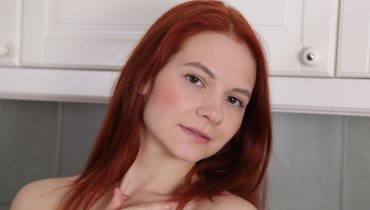For years, Olivia Davis thought that sleepless nights were just part of adulthood. “I used to tell myself that rest was for people with less to do,” she says, laughing softly. But as the years went on, her body disagreed.
“I’d lie awake at 2 a.m., staring at the ceiling, my mind racing through tomorrow’s deadlines.” What started as occasional insomnia turned into chronic exhaustion. Coffee replaced rest, and anxiety became her bedtime companion. “It felt like my brain had forgotten how to turn off.”
Her wake-up call came one morning when she nearly fell asleep at a red light. “That scared me,” she says. “I realized fatigue wasn’t something I could keep ignoring.” Determined to regain her health, Olivia began exploring holistic methods for rest — from breathing practices to mindfulness meditation — eventually discovering that relaxation techniques for deep sleep were not only effective but life-changing. “Sleep,” she smiles, “became my greatest act of self-care.”
From Restless Nights to Renewal: Olivia’s Turning Point
Olivia’s first step was understanding what was really happening in her body. According to the Sleep Foundation, over 30% of American adults suffer from short-term insomnia, often caused by stress, digital overstimulation, and inconsistent schedules. “I fit that description perfectly,” she admits. “I’d work until midnight, then scroll through emails in bed. My body was in ‘go’ mode 24/7.”
She learned that true rest requires a shift in both mindset and physiology. “You can’t just decide to sleep — you have to train your nervous system to relax,” she says. That realization led her to experiment with breathing exercises, progressive muscle relaxation, and guided meditation apps. “I started small,” she recalls. “Five minutes of breathing before bed. It felt silly at first, but my heart rate slowed, and my body softened.”
After a few weeks, the results were undeniable. “I stopped waking up at 3 a.m. My mind didn’t spiral anymore,” she says. “For the first time in years, I was sleeping deeply.”
The Science of Relaxation and Deep Sleep
To understand why relaxation techniques work, Olivia turned to science. According to Harvard Health, relaxation practices stimulate the parasympathetic nervous system — the body’s “rest and digest” mode — lowering heart rate, reducing cortisol, and preparing the brain for sleep. “When stress hormones drop, melatonin — the sleep hormone — finally gets a chance to do its job,” she explains.
Breathing exercises, in particular, activate the vagus nerve, which connects the brain to the body. “It’s like pressing a ‘calm’ button,” Olivia says. Her favorite is the 4-7-8 technique popularized by Dr. Andrew Weil: inhale for four seconds, hold for seven, exhale for eight. “It sounds simple, but it’s science-backed,” she says, referencing studies by the National Center for Biotechnology Information (NCBI) showing that slow breathing increases heart rate variability and reduces insomnia symptoms.
She also discovered that not all relaxation techniques are equal — some are physiological, while others are psychological. “You can stretch your body and still be tense in your mind,” she says. “True rest comes when both align.”
Olivia’s Nightly Routine: A Digital Detox for the Soul
Olivia redesigned her evenings like a ritual. “I treat bedtime the way most people treat mornings — it’s sacred,” she says. Her phone goes on airplane mode an hour before bed. Instead of doom-scrolling, she journals or reads something light. “My goal is to send my brain a message: the day is done.”
She uses a soft amber light in her bedroom to mimic sunset, reducing blue-light exposure. According to the Mayo Clinic, blue light from screens suppresses melatonin production — delaying sleep by tricking the brain into thinking it’s still daytime. “When I learned that, I bought a $15 bedside lamp, and it honestly changed my nights,” she laughs.
Next comes breathing and mindfulness. “I start with 10 deep breaths,” she says. “Then I do a body scan — noticing where I’m tense, from my toes to my forehead. It’s like giving my body permission to rest.” She sometimes uses an app like Calm or Headspace for guided meditations. “The narrator’s voice becomes a lullaby,” she says. “Within minutes, my mind lets go.”
Progressive Muscle Relaxation: Letting Go One Step at a Time
Among all techniques, Olivia swears by progressive muscle relaxation (PMR). Developed in the 1930s by Dr. Edmund Jacobson, PMR involves tensing and releasing muscle groups to trigger physical calm. “It’s the opposite of stress,” she explains. “When you learn to release tension physically, your mind follows.” Studies from the National Library of Medicine confirm that PMR can improve sleep onset and duration by reducing sympathetic nervous activity.
Olivia practices PMR every night: “I start with my feet — curl the toes, hold, release — then move upward. By the time I reach my shoulders, I’m already halfway asleep.” She pairs this with soothing sounds — soft rain or ocean waves — using an app that plays natural frequencies proven to calm the brain. “It’s like tucking my mind in for the night.”
Mindfulness and Gratitude Before Bed
Beyond physical techniques, Olivia found emotional tools equally vital. “My biggest sleep thief was overthinking,” she says. “Mindfulness helped me break that loop.” Instead of fighting thoughts, she observes them. “I imagine each worry floating away like clouds. I tell myself, ‘This can wait until morning.’”
She also writes three lines of gratitude before bed — a practice inspired by positive psychology research at the University of California, Berkeley. “Gratitude shifts your focus from anxiety to appreciation,” she says. “It’s hard to spiral when you’re thankful.” Over time, this simple act reprogrammed her bedtime mindset. “Instead of dread, I started associating night with peace.”
The Role of Environment and Sensory Cues
Olivia also learned the power of sensory triggers. “Smell, sound, and texture all matter,” she says. She diffuses lavender oil, uses soft cotton sheets, and keeps her room at 68°F — the temperature recommended by the Sleep Foundation for optimal sleep. “When my body feels safe, my mind follows,” she says. “It’s biology, not luxury.”
Her favorite nighttime beverage is chamomile tea with a hint of honey. “It’s comforting without caffeine,” she smiles. “I call it my ‘liquid calm.’” The ritual itself signals rest. “Your brain learns routines,” she says. “If every night smells, sounds, and tastes peaceful, your body starts preparing automatically.”
What Olivia Learned About Rest — and Herself
Months into her new lifestyle, Olivia began noticing deeper changes. “My sleep was better, but so was my patience,” she says. “I stopped snapping at people. My focus improved. I felt grounded.” Sleep, she realized, wasn’t just recovery — it was transformation. “You don’t rebuild your body when you’re awake,” she says. “Healing happens in the quiet.”
Her friends often ask what finally worked. “Consistency,” she answers without hesitation. “You can’t hack rest. You have to practice it.” She compares her routine to muscle training: “The first few nights, it feels weird. By week three, your body gets it. By month two, you can’t live without it.”
She also emphasizes that relaxation isn’t one-size-fits-all. “Some people love breathing techniques; others prefer journaling or yoga,” she says. “The point is to find what truly calms you. For me, it’s a mix of mindfulness, breathing, and gratitude.”
Combining Modern Tools with Ancient Wisdom
Interestingly, Olivia’s modern routine is rooted in ancient wisdom. “Yoga nidra, progressive relaxation, deep breathing — these are centuries-old,” she says. “Science is finally catching up.” She often recommends pairing apps like Calm with traditional practices. “AI can guide you, but the wisdom is timeless.”
Her favorite discovery was how meditation changes brain structure. Studies from Harvard Medical School show that consistent mindfulness increases gray matter in the hippocampus — the region linked to memory and emotional regulation. “That’s why meditation feels like brain repair,” she says. “It literally reshapes your stress response.”
Olivia’s Step-by-Step Routine for Deep Sleep
Here’s the sequence that transformed her nights:
- 1 hour before bed: Turn off all screens. Dim the lights. Brew herbal tea.
- 45 minutes before: Gentle stretching or yoga poses — child’s pose, legs up the wall.
- 30 minutes before: Write down tomorrow’s to-do list, then close the notebook — signal “done.”
- 15 minutes before: Perform 4-7-8 breathing. Slow exhale. Feel your shoulders drop.
- At bedtime: Play calm ambient sounds. Do a body scan. Whisper gratitude.
“I follow it like a ritual,” she says. “By the time my head hits the pillow, my body already knows what to do.”
The Final Lesson: Rest Is Not Laziness
Looking back, Olivia wishes she had learned earlier that rest isn’t weakness — it’s wisdom. “We glorify exhaustion,” she says. “But productivity means nothing without peace.” Sleep became her foundation for creativity, focus, and joy. “I used to chase energy drinks,” she says. “Now I chase quiet.”
She often shares her story in wellness workshops, encouraging others to prioritize sleep. “If you fix your nights, your days fix themselves,” she says. “Deep sleep isn’t indulgent — it’s essential.” For Olivia, relaxation techniques became more than tools; they became a philosophy. “Every breath is a message to your body that you’re safe,” she says. “And when you feel safe, you can finally rest.”




























































